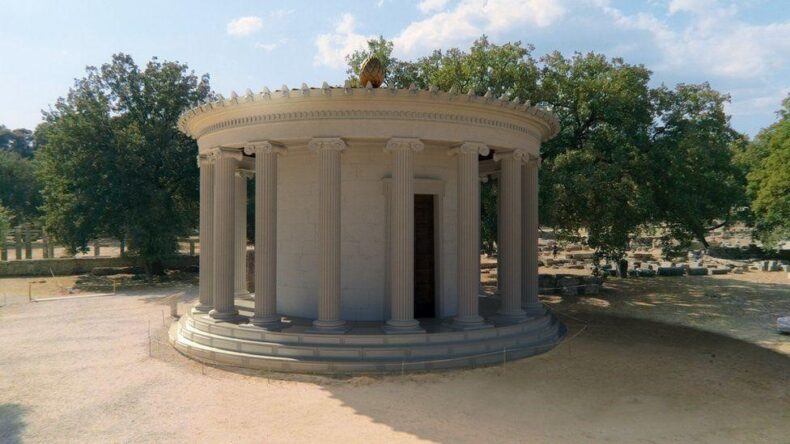The initiative is a collaboration between Microsoft and the Ministry of Culture and Sport of Greece.
In southern Greece, a new technology project is enabling visitors to experience the ancient birthplace of the Olympic Games. The project recreated temples and competition sites in the ancient city of Olympia using augmented reality.
It was just unveiled in the city, which is home to one of the world’s most important archaeological sites.
The technology of AR, or augmented reality, allows computer-generated visuals to be projected onto specific eyeglasses. The visuals appear with other actual items in the area when viewed through the eyewear.
The initiative is a collaboration between Microsoft and the Ministry of Culture and Sport of Greece. Microsoft received assistance from the ministry in mapping and creating virtual representations of Olympia.
The city was utilised to hold the ancient Greek games that served as the model for the modern Olympics for about a thousand-year milestone… that let us bring technology, culture, and history together so we can preserve it.”
Users can virtually wander among the remains of Olympia as part of the experience.
People can now use Microsoft’s AR headsets to get a similar experience at the Olympic Museum in Athens. Kyriakos Mitsotakis, the Greek Prime Minister, joined a group of students using the app for the first time.
Mitsotakis told The Associated Press, “I’m tremendously happy that we’re able to bring to the globe a whole new cultural experience using technology to re-create the ancient culture of Olympia.”
Digitising the Site
Microsoft worked with technology startup Iconem, which specialises in 3D digitisation of historical sites, as part of its AI for Cultural Heritage effort.
Microsoft AI analysed the images to generate models after taking hundreds of thousands of location images with on-the-ground cameras and drones.
“This technology’s cultural consequences are limitless. For the first time, tourists from all over the world can virtually visit Olympia, the birthplace of democracy, and immerse themselves in history,” Kyriakos Mitsotakis, the Greek Prime Minister, declared as much.
“The effort to digitally conserve Ancient Olympia is a magnificent achievement in cultural heritage, combining humanity and cutting-edge technology together to benefit the globe, and empower future generations with new ways to explore our past,” said Brad Smith, president of Microsoft.
The Role of Microsoft
With its ideas for the so-called metaverse, Microsoft hopes to compete with Facebook.
It just introduced a metaverse for meetings called Microsoft Teams, and it wants to turn Minecraft and other games it owns into more immersive 3D worlds.
Thanks to a partnership with the Greek government, people can tour the site remotely or in-person via an augmented-reality mobile app. HoloLens headsets may be used to overlay a digital representation of the Olympic Museum in Athens.
Microsoft’s smart glasses for augmented reality HoloLens display information, blend with the actual environment, and simulate a virtual world using many sensors, advanced optics, and holograms.
The original Olympic Stadium, the temples of Zeus and Hera, and the workshop of the famed sculptor Phidias are among the 27 sites to be saved.
The structures are as similar to their original forms as feasible and incorporate historical chronology detailing the site’s evolution across time and representations of artefacts from each period.
About Olympia
Olympia is a tiny town in Elis, Greece, known for the surrounding archaeological site of the same name. It was a prominent Panhellenic religious sanctuary of ancient Greece and the location of the ancient Olympic Games, which were held every four years from the 8th century BC until the 4th century AD. In 1894, they were revived globally to reflect the concept of peaceful international contention for excellence.













